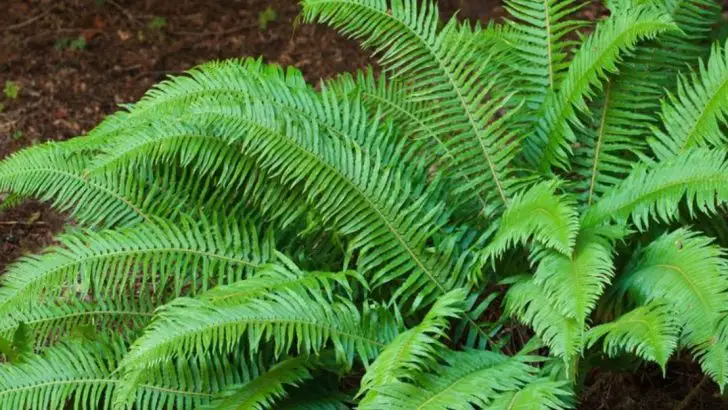Living in the Pacific Northwest means learning to garden in cool temps, frequent rain, and lots of dappled shade. While the lush green landscape is stunning, not all plants are up for the challenge of thriving beneath cloudy skies and damp soil.
These 19 plants are true regional champions—they actually prefer shady, moist environments, making them perfect for yards in areas like Seattle, Portland, or anywhere the moss grows thick. From bold ferns to cheerful flowering ground covers, they’ll bring life to even your darkest garden corners.
With these shade-loving, rain-happy picks, you can turn your soggy yard into a thriving woodland oasis, no sun required.
Sword Fern
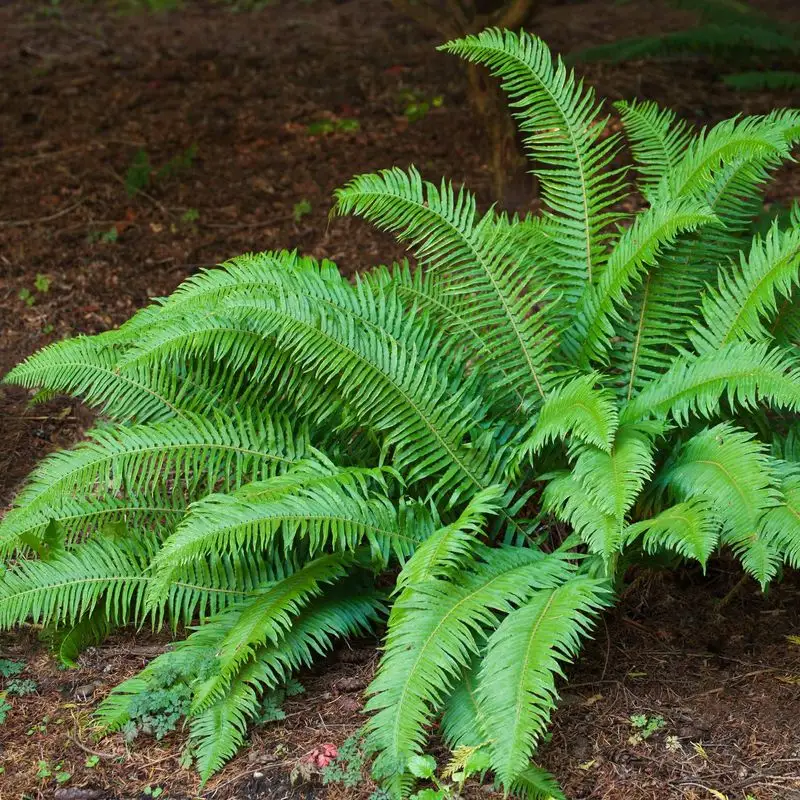
Known for its robust, arching fronds, the Sword Fern is a staple in many Pacific Northwest gardens. These evergreens unfurl their fronds in a distinctive sword-like shape, providing a lush backdrop throughout the year. In dimly lit corners, they evoke a sense of deep forest tranquility.
The Sword Fern thrives in moist, well-drained soil and is incredibly tolerant of heavy rainfall. Its ability to retain its vibrant green hue even in the depths of winter makes it a valuable asset. To maintain its vigor, simple seasonal pruning is all it needs, making it a low-maintenance choice.
Hosta
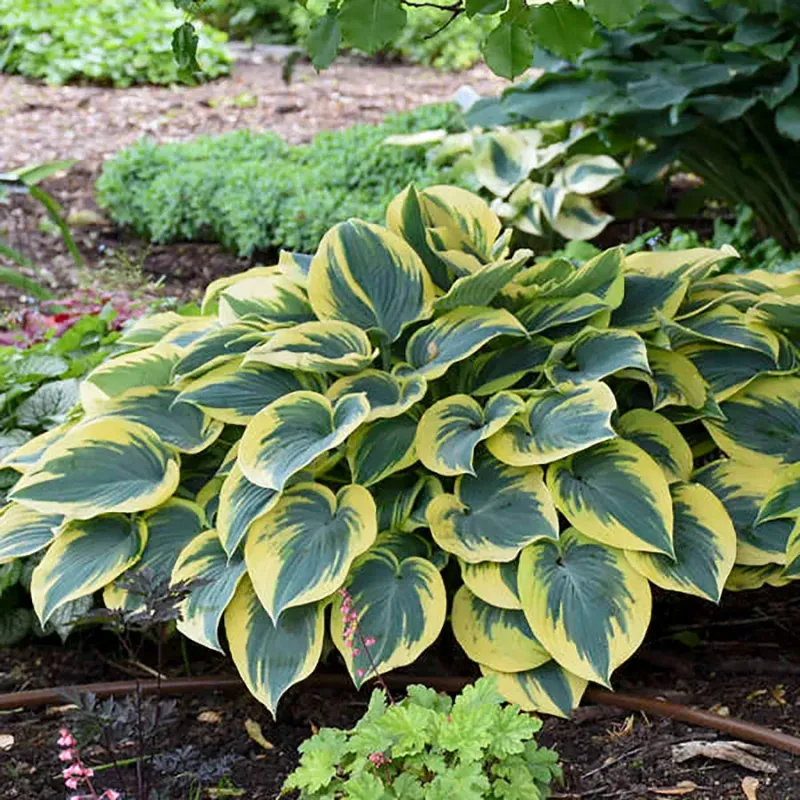
Celebrated for their broad and diverse foliage, Hostas are the unsung heroes of shade gardens. Their leaves come in an array of colors, from deep blue-greens to vibrant variegated patterns, adding visual interest where it’s needed most.
Hostas flourish in shady, damp areas, absorbing the abundant Pacific Northwest rain to maintain their lush appearance. These plants are ideal for adding texture and structure beneath taller trees. Due to their hardy nature, they can withstand the region’s winter chills, emerging each spring with renewed vigor.
Japanese Maple
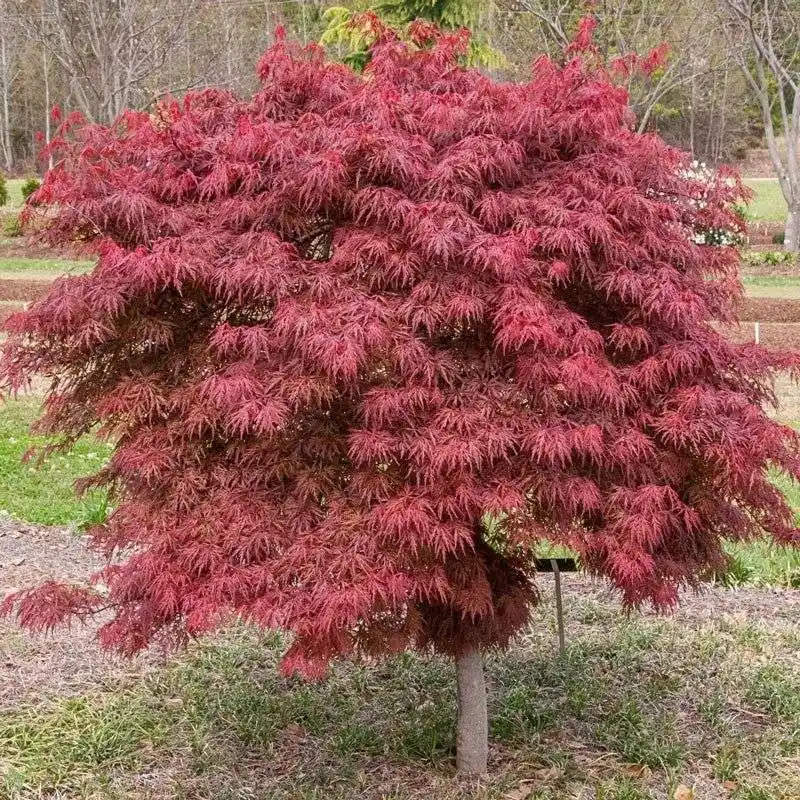
With its lacy leaves and elegant form, the Japanese Maple is a stunning focal point in any shaded garden. Its leaves, which change from green to brilliant red or orange in autumn, provide a striking contrast against the verdant backdrop.
These trees are well-suited to the rainy Pacific Northwest, as they prefer moist, well-drained soil and can tolerate partial shade. Their graceful branches offer a year-round visual appeal, making them a timeless addition to any landscape. Pruning helps maintain their shape and encourages healthy growth.
Bleeding Heart
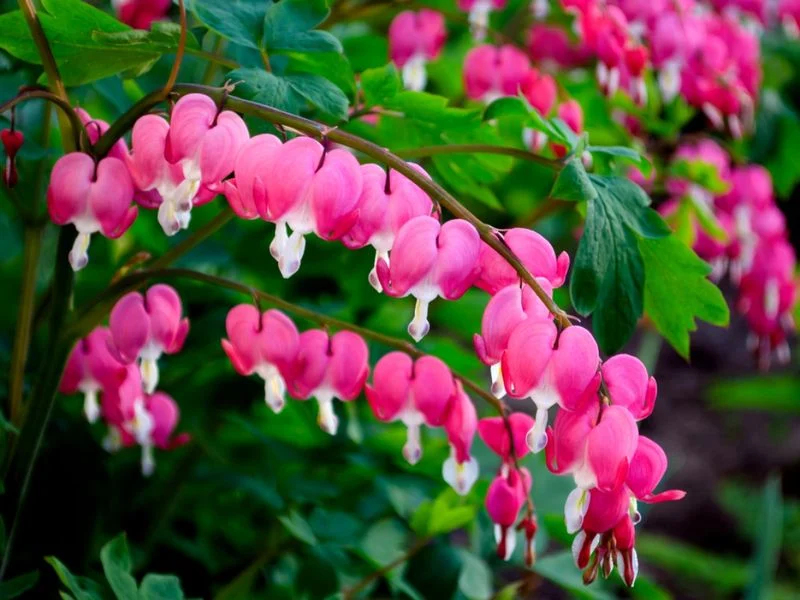
Adorned with heart-shaped blossoms, the Bleeding Heart adds a touch of whimsy to the garden. Its arching stems carry rows of delicate pink and white flowers, resembling a string of hearts swaying gently in the breeze.
Perfect for shaded areas, this plant thrives in the moist, fertile soils typical of the Pacific Northwest. It enjoys cool temperatures and can tolerate heavy rainfall, making it an ideal choice for woodland gardens. Once established, it requires minimal care, delighting gardeners each spring with its enchanting blooms.
Ferns of Maidenhair
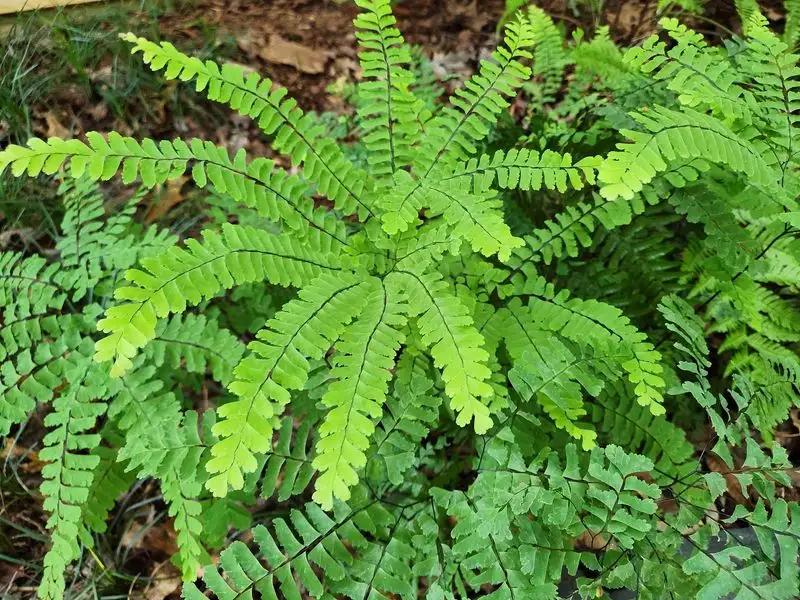
The Maidenhair Fern is synonymous with elegance, featuring fan-shaped fronds that flutter gracefully in the breeze. Its delicate structure belies a surprisingly robust nature, perfectly suited to the Pacific Northwest climate.
This fern thrives in the shade and adores the region’s high humidity and frequent rain. It requires consistently moist soil, making it an excellent choice for damp, low-light areas. As a bonus, it adds a touch of sophistication to any garden. Regular watering and occasional trimming keep this fern in prime condition.
Coral Bells
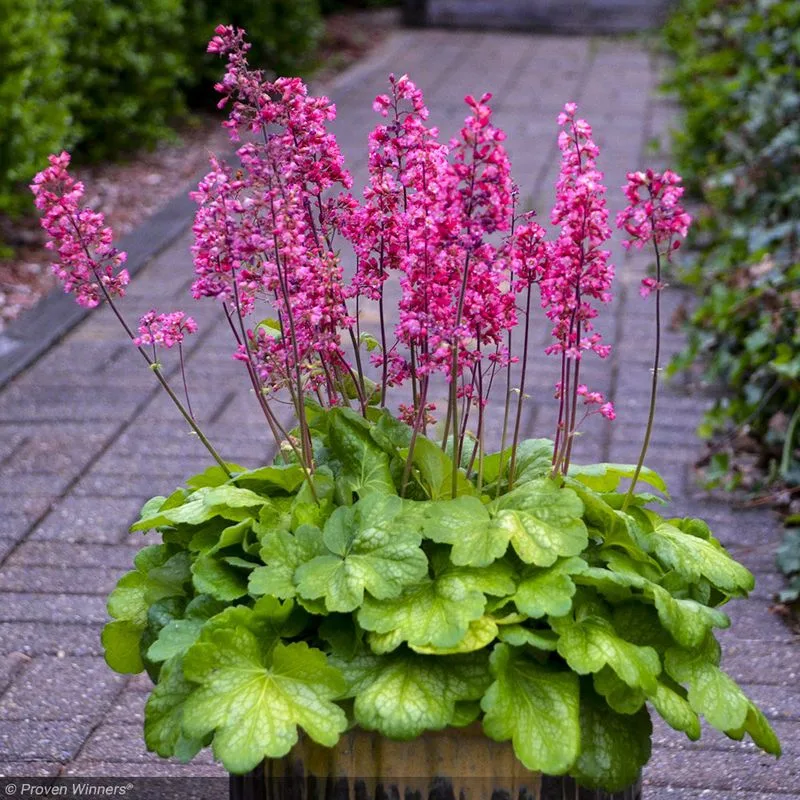
Coral Bells are renowned for their stunning foliage, available in a spectrum of colors, from deep burgundy to vivid lime. These hardy perennials add a pop of color to shaded gardens, contrasting beautifully with more muted greens.
In the Pacific Northwest, Coral Bells thrive in the shady, moist conditions provided by the frequent rain. They prefer well-drained soil and can handle the region’s cooler temperatures with ease. Their versatility makes them a fantastic ground cover, and they’re especially eye-catching when planted en masse.
Astilbe
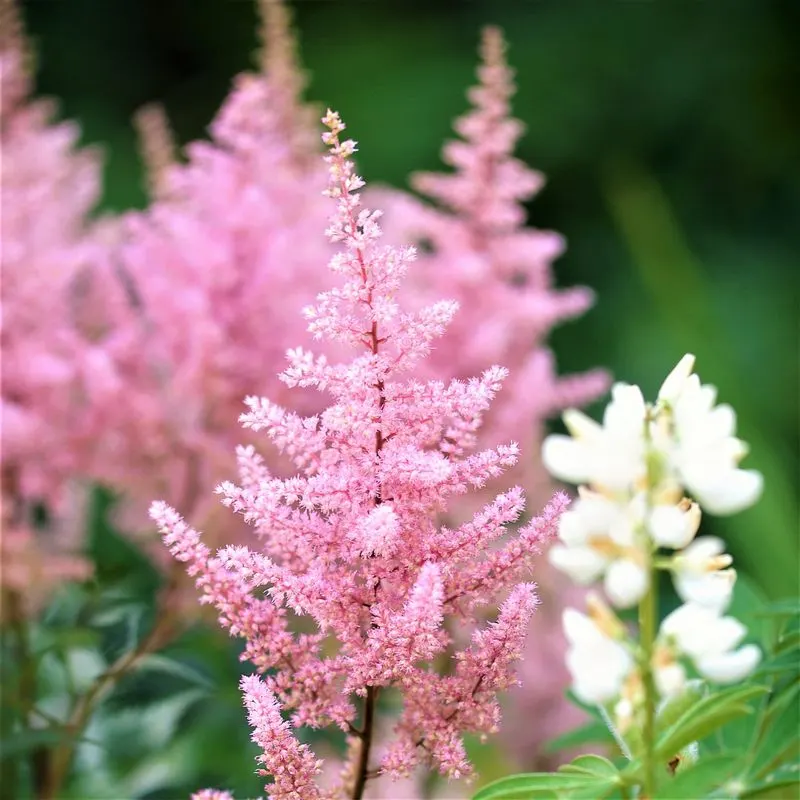
Astilbes are celebrated for their feathery plumes of flowers that rise above fern-like foliage. These perennials bring texture and vibrant hues, ranging from soft pinks to rich purples, brightening shaded areas.
Perfectly adapted to the Pacific Northwest’s wet climate, Astilbes thrive in moist, shaded locations. They love the abundant rainfall and require little maintenance once established. Regular watering and a bit of mulch help them flourish. Their blooms attract pollinators, adding an ecological benefit to their aesthetic appeal.
Japanese Forest Grass

Japanese Forest Grass adds movement and elegance with its cascading golden-green blades. This ornamental grass thrives in shady spots, providing a graceful contrast to bolder plants.
In the Pacific Northwest, it enjoys the moist, fertile conditions and can withstand the region’s frequent rainfalls. While it prefers consistent moisture, it is surprisingly low-maintenance, requiring minimal attention beyond occasional trimming. Its soft texture and gentle sway bring a soothing, zen-like quality to gardens.
Lady’s Mantle

Lady’s Mantle is cherished for its scalloped leaves that capture rain droplets like tiny jewels. This perennial adds a soft, romantic touch to shaded gardens.
Thriving in the cool, wet climate of the Pacific Northwest, Lady’s Mantle prefers well-drained yet moist soil. It is a versatile plant that can fill gaps between larger shrubs and trees, offering a delicate backdrop with its chartreuse blooms. Its resilience and easy care make it a favorite among gardeners looking for reliable beauty.
Hellebore
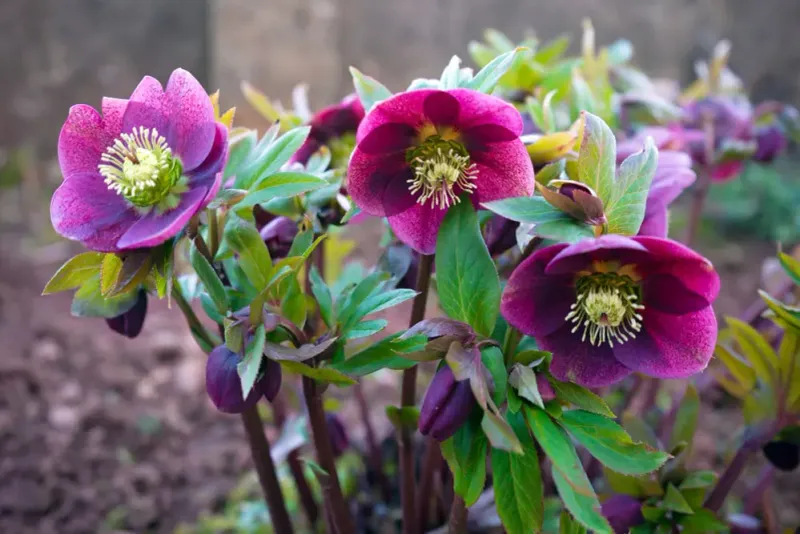
Hellebores, often called the “Christmas Rose,” bloom when little else does, showcasing their enchanting flowers in late winter to early spring. Their muted colors, from ivory to purple, bring subtle beauty to shaded areas.
In the Pacific Northwest, they thrive under canopies in rich, moist soils, benefiting from the gentle rains. Once established, they require minimal upkeep, rewarding gardeners with long-lasting blooms. This perennial is not only a visual delight but also deer-resistant, making it a practical choice for many gardens.
Heather
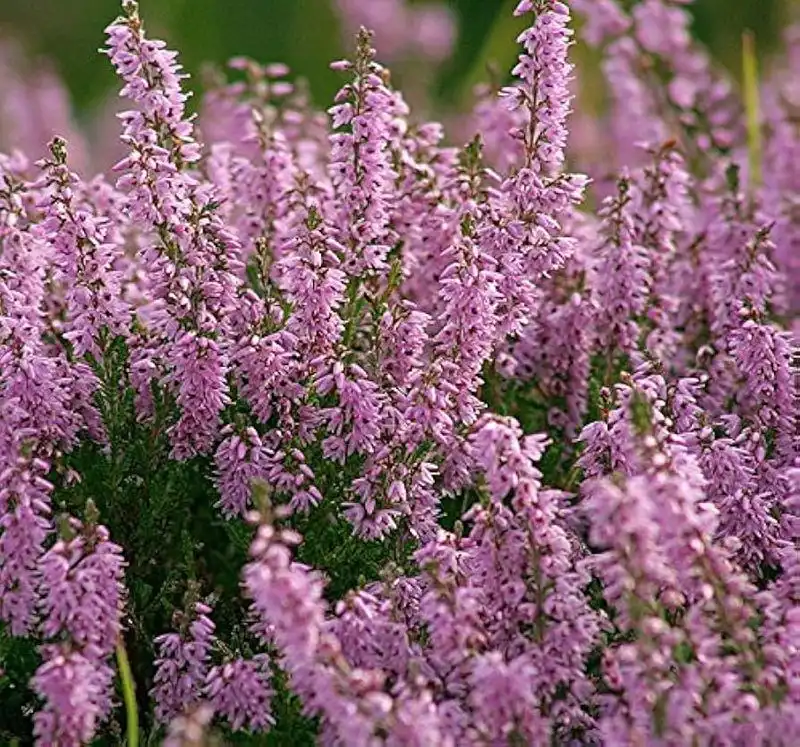
Heather is a charming ground cover, known for its profusion of tiny blooms that paint the garden in shades of purple, pink, or white. Its evergreen foliage adds year-round interest, even in the gloomiest corners.
This hardy plant thrives in the Pacific Northwest’s acidic, well-drained soils, enjoying the frequent rain and occasional sun breaks. Heather requires little maintenance beyond pruning to encourage bushy growth. Its ability to attract pollinators adds ecological value, making it a win-win for gardeners and wildlife alike.
Toad Lily
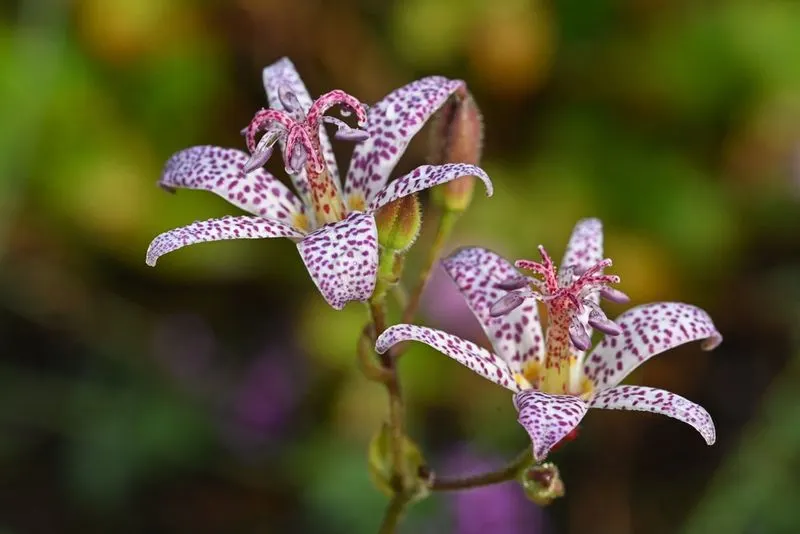
Toad Lilies bring an exotic flair to shaded gardens with their orchid-like flowers, speckled in intricate patterns. Blooming in late summer to fall, they provide a burst of color when many plants begin to fade.
Ideal for the moist, shaded environments of the Pacific Northwest, Toad Lilies thrive in rich soil and enjoy the region’s cool, wet conditions. These perennials require little care once established, captivating gardeners with their unique beauty. A top choice for adding late-season interest to your garden.
Lungwort

Lungwort is an understated gem, offering unique spotted foliage and delicate blue flowers in early spring. Its leaves, adorned with silvery spots, add a splash of interest even after the blooms fade.
Thriving in the Pacific Northwest, Lungwort prefers moist, shaded areas and appreciates the gentle rains. Its low-growing habit makes it perfect for ground cover under trees or shrubs. This hardy perennial is deer-resistant and attracts pollinators, adding ecological benefits to its already charming presence.
Solomon’s Seal
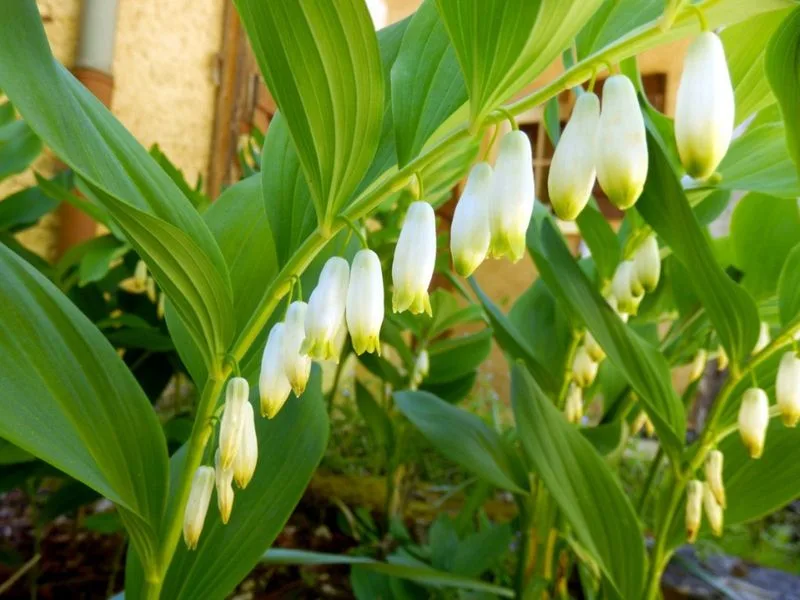
Solomon’s Seal captivates with its arching stems and pendulous white flowers that dangle in the breeze. The leaves form a lush, green backdrop, creating a sense of movement and elegance.
In the Pacific Northwest, this plant thrives in the shade, preferring rich, moist soils and benefiting from the region’s frequent rain. It’s a low-maintenance addition to any garden, requiring little more than seasonal trimming. Its ability to naturalize and form colonies makes it an excellent ground cover option.
Brunnera

Brunnera, often called “Siberian Bugloss,” enchants with heart-shaped leaves that boast silver tints and dainty blue flowers. It resembles Forget-Me-Nots, providing a nostalgic touch in spring.
This perennial thrives in the Pacific Northwest, loving the shade and consistent moisture provided by frequent rains. Its foliage remains attractive even after the blooms have gone, making it a reliable choice for ground cover. Minimal care is needed, as it naturally resists pests and diseases, adding enduring beauty to your garden.
Creeping Jenny

Creeping Jenny is known for its vibrant green-yellow leaves that spill over edges, creating a lush carpet effect in gardens. Its trailing habit makes it ideal for covering ground or cascading over containers.
In the Pacific Northwest, it flourishes in the shade, thriving on abundant moisture and frequent rains. This low-maintenance plant requires little more than occasional trimming to control its spread. Its bright foliage provides a striking contrast against darker backgrounds, enhancing the visual appeal of shady areas.
Foxglove
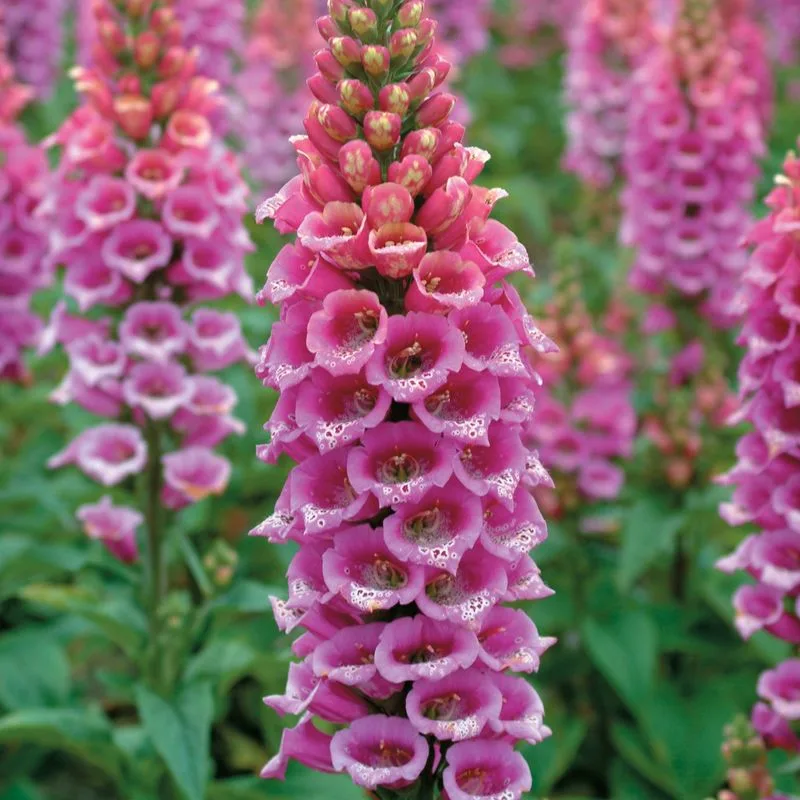
Foxgloves are towering beauties with spires of bell-shaped flowers in shades of pink and purple. Their tall, elegant presence adds vertical interest to any garden.
Adapted well to the Pacific Northwest, they thrive in partial shade and moist, well-drained soils, soaking up the region’s frequent rainfall. Foxgloves are biennials but self-seed easily, ensuring their continued presence. Their blooms attract hummingbirds, adding life and movement to your garden. A little deadheading encourages prolonged flowering.
Trillium
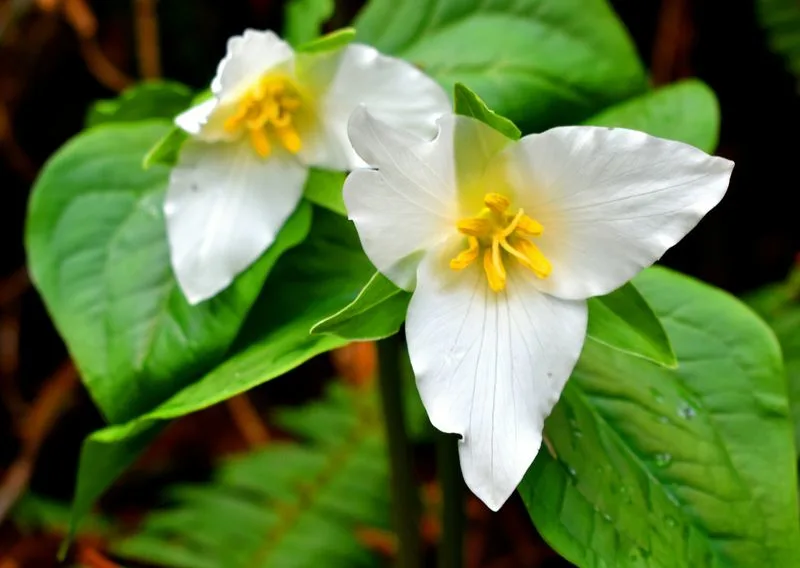
Trilliums, with their distinctive three-petaled blooms, are woodland treasures that herald the arrival of spring. Their simple yet elegant flowers thrive under the canopy of larger trees.
In the Pacific Northwest, Trilliums enjoy the cool, damp environments provided by the shade and rain. They require little care once established, making them excellent for naturalized areas. Over time, they form charming colonies that carpet the forest floor. Patience is rewarded with these slow-growing perennials, as they bring timeless woodland beauty to any garden.
Wintergreen
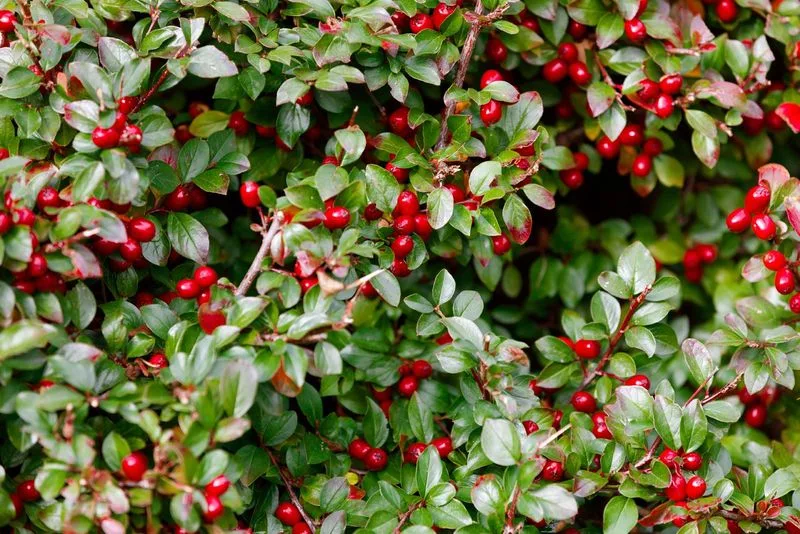
Wintergreen offers year-round appeal with its glossy leaves and bright red berries, adding pops of color even in winter. This groundcover is perfect for shaded gardens, where it thrives quietly yet beautifully.
In the Pacific Northwest, Wintergreen prefers acidic, well-drained soils and benefits from the region’s consistent rainfall. The berries are not only decorative but also edible, providing a delightful bonus for gardeners. Minimal care is needed, making it an easygoing choice that rewards with continual interest and charm.

